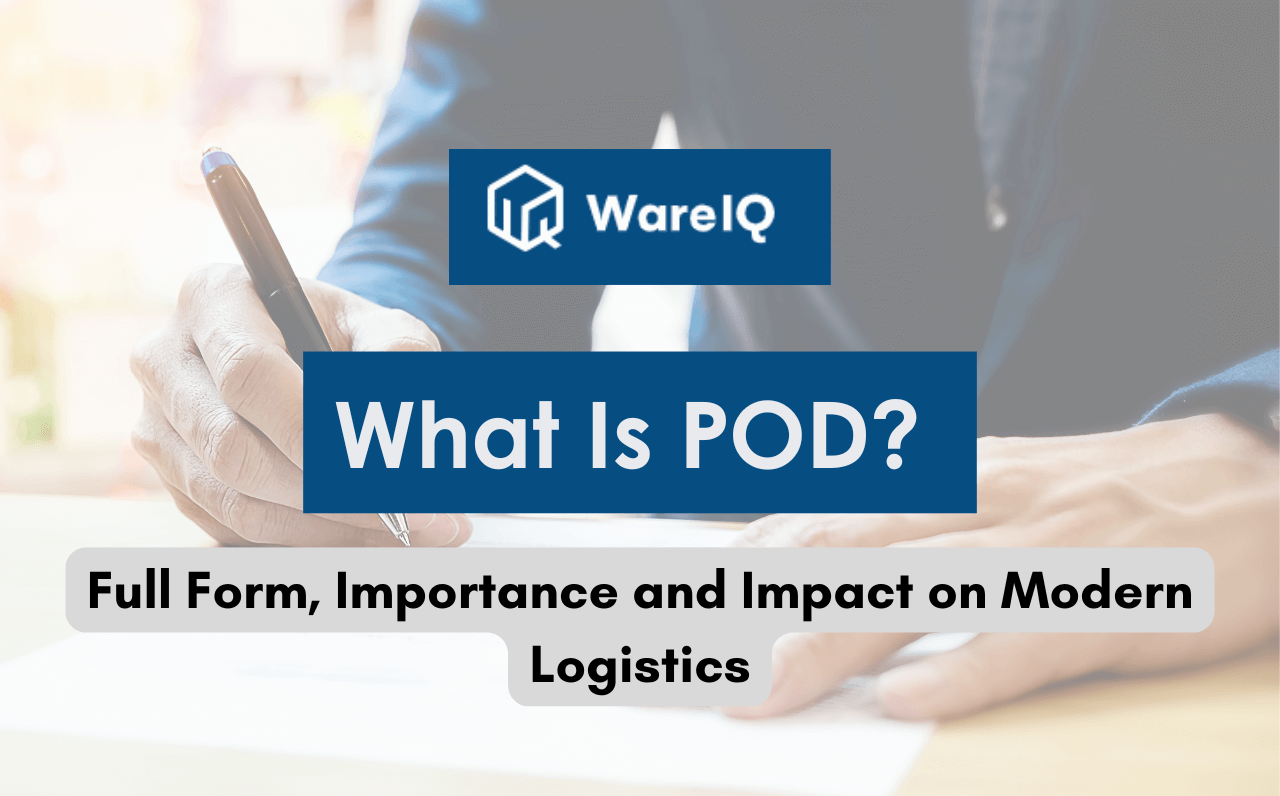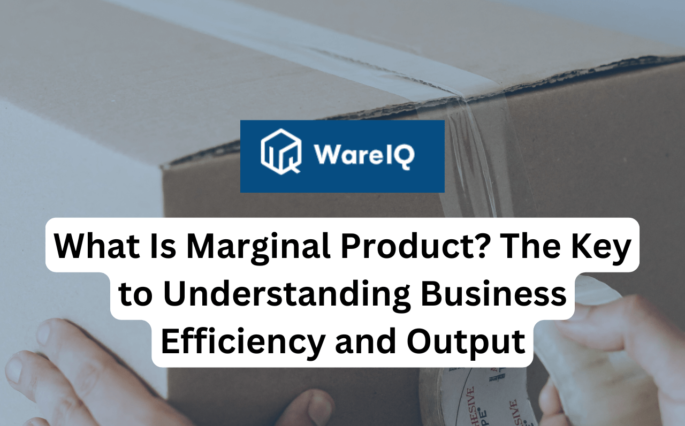What Is POD? Full Form, Importance and Impact on Modern Logistics [2025]

In the intricate web of modern logistics, where the seamless movement of goods is imperative for businesses to thrive, Proof of Delivery (POD) stands as a beacon of reliability. Defined as conclusive evidence of successful delivery, POD holds paramount importance in both shipping and logistics realms. This pivotal document serves as a testament to the completion of the delivery process, assuring both senders and recipients alike. In the dynamic landscape of e-commerce, where speed and accuracy are non-negotiable, understanding what is POD and its intricacies essential for businesses aiming to stay ahead of the curve.
As we delve deeper into the world of logistics, it becomes evident that POD is more than just an acronym; it embodies the essence of accountability and transparency in supply chain operations. From its full form to its impact on modern logistics, this article aims to unravel the layers of POD, shedding light on its significance and implications for businesses navigating the complex terrain of shipping and delivery. Join us on this journey as we explore the nuances of POD, from its inception to its evolution in the digital age, and discover how this seemingly simple document has revolutionised the way we perceive and manage logistics operations.

What Is POD?
What is POD full form In Logistics? POD stands for Proof of Delivery
Proof of Delivery (POD) serves as a critical document in the logistics ecosystem, offering tangible evidence that a shipment has been successfully delivered to its intended recipient. It bridges the gap between the sender and the recipient, confirming that the goods or services have reached their final destination. Typically, a POD includes vital information such as the recipient’s name, signature, delivery date and time, description of the delivered items, and any relevant remarks or notes. This documentation acts as legal proof of the completion of the delivery process, safeguarding both parties against disputes or discrepancies.
The acronym “POD” stands for “Proof of Delivery,” encapsulating the essence of its purpose. It signifies the conclusive evidence required to validate the successful receipt of goods or services by the intended recipient. In essence, POD serves as a testament to the completion of the delivery journey, providing peace of mind to both senders and recipients. Whether it’s a physical signature on a paper document or an electronic confirmation through a digital platform, the underlying principle remains the same: to establish irrefutable proof that the shipment has been received in good order.
Importance of POD in Logistics
Enhanced Tracking and Accountability
In logistics operations, where the movement of goods involves multiple parties and stages, tracking becomes paramount. POD in logistics serves as a linchpin in this process, providing a clear trail of each shipment’s journey. By capturing essential details such as the time and location of delivery, the recipient’s signature, and any additional remarks, POD enhances tracking capabilities, enabling businesses to monitor the progress of their shipments in real-time.
This transparency not only facilitates efficient inventory management but also fosters accountability throughout the supply chain. With POD in place, businesses can pinpoint the exact whereabouts of their shipments at any given moment, enabling them to proactively address any delays or issues that may arise, thus ensuring timely delivery to customers.
Reduced Disputes and Errors
In the realm of logistics, where the slightest error or miscommunication can lead to costly disputes, POD serves as a beacon of clarity and certainty. By providing irrefutable proof of delivery, complete with recipient signatures and timestamps, POD minimises the risk of misunderstandings or disputes regarding the status of shipments.
This not only streamlines the resolution process but also cultivates trust and confidence among all stakeholders involved. Moreover, by documenting the condition of goods upon delivery, POD helps mitigate the risk of errors or discrepancies, ensuring that customers receive their orders accurately and in good condition. In essence, POD acts as a shield against potential disputes and errors, safeguarding the interests of both businesses and customers alike.
POD in Modern Logistics
Digitalisation of POD (Proof of Delivery)
In recent years, the advent of digital technologies has revolutionised the way POD is managed and processed in the logistics industry. Traditional paper-based methods are being phased out in favour of electronic proof of delivery systems, which offer a host of benefits. These digital solutions streamline the entire POD process, from capturing signatures electronically to providing real-time updates on delivery status.
By digitising POD, businesses can eliminate the need for manual paperwork, reduce the risk of errors, and improve operational efficiency. Moreover, digital POD systems often integrate seamlessly with other logistics management software, allowing for centralised tracking and management of all delivery-related data.
Integration with E-commerce Platforms
The rise of e-commerce has necessitated the integration of POD systems with online retail platforms, creating a seamless end-to-end delivery experience for customers. Modern e-commerce platforms often come equipped with built-in POD functionalities, allowing customers to track their orders in real time and receive instant notifications upon delivery. This integration not only enhances the overall customer experience but also provides businesses with valuable insights into their delivery performance.
By leveraging data from POD systems, e-commerce companies can optimise their delivery processes, minimise transit times, and improve customer satisfaction levels. In essence, the integration of POD with e-commerce platforms represents a paradigm shift in the way logistics operations are managed and executed in the digital age.
Proof of Delivery (POD) Documentation and Number
POD Document
The POD document serves as the official record of a successful delivery transaction, capturing vital information that verifies the completion of the delivery process. Typically, a POD document includes details such as the recipient’s name, signature, delivery date and time, description of the delivered items, and any relevant remarks or notes. This documentation acts as tangible proof of delivery, assuring both senders and recipients that the goods or services have been received in good order. In addition to its legal significance, the POD document also serves as a valuable tool for record-keeping and audit purposes, enabling businesses to track and monitor their delivery transactions effectively.
Understanding the POD Number
Each POD is assigned a unique identifier known as the POD number, which serves as a tracking reference for the delivery transaction. This alphanumeric code helps businesses identify and trace individual shipments within their logistics systems, providing them with valuable insights into the movement of goods. The POD number plays a crucial role in streamlining logistics operations, allowing businesses to track the status of their shipments, generate delivery reports, and reconcile delivery records with customers’ orders. By leveraging the POD number, companies can ensure transparency and accountability throughout the delivery process, thereby enhancing customer satisfaction and loyalty.
Best Practices for Successful Implementation of POD Systems
1. Integration with Supply Chain Management Systems
Businesses can maximise the benefits of POD by integrating it with their existing supply chain management systems. By linking POD data with inventory management, order processing, and customer relationship management systems, companies can streamline their operations and gain valuable insights into their logistics performance. This integration allows for seamless coordination between different departments and stakeholders, leading to improved efficiency and cost savings.
2. Customisation and Flexibility
Businesses must choose a POD solution that offers customisation and flexibility to meet their specific needs. Whether it’s capturing additional data fields, configuring delivery notifications, or integrating with third-party software, a customisable POD system can adapt to evolving business requirements and enhance overall effectiveness. By tailoring the POD process to suit their unique workflows, businesses can optimise efficiency and achieve better outcomes in their logistics operations.
3. Training and Support
Implementing a new POD system requires proper training and support for employees to ensure smooth adoption and usage. Companies should invest in comprehensive training programs to familiarise staff with the new system’s features and functionalities. Additionally, ongoing technical support and troubleshooting assistance are crucial for addressing any issues or concerns that may arise during implementation or day-to-day operations. By empowering employees with the necessary knowledge and support, businesses can maximise the benefits of their POD solution and drive success in their logistics endeavours.
Conclusion
In the fast-paced realm of logistics, Proof of Delivery (POD) stands as a testament to reliability and efficiency. From its role in verifying deliveries to its integration with digital technologies, POD plays a crucial role in modern supply chains. By embracing digitalisation and best practices for implementation, businesses can harness the power of POD to streamline operations and enhance customer satisfaction. As we look to the future, the journey of POD continues, shaping the way we perceive and manage logistics in an ever-changing world.
FAQs About POD (Proof of Delivery)
What is the significance of POD in shipping and logistics?
POD holds immense significance in shipping and logistics as it serves as tangible evidence of successful delivery, enhances tracking capabilities, and reduces disputes and errors in the delivery process.
How does digitalisation impact the POD process?
The digitalisation of the POD process enables real-time tracking, instant access to delivery confirmations, and seamless integration with e-commerce platforms, thereby improving efficiency and customer satisfaction.
What information is included in a typical POD document?
A typical POD document includes details such as the recipient’s name and signature, delivery date and time, description of delivered items, and any relevant notes or remarks.
How does POD help in reducing disputes and errors in delivery?
By clearly documenting the delivery process, including recipient signatures and timestamps, POD minimises the risk of misunderstandings or false claims, thereby reducing disputes and errors.
What role does the POD number play in logistics?
The POD number serves as a unique identifier for each delivery transaction, enabling tracking and traceability throughout the supply chain and ensuring accountability at every stage.
How does POD contribute to the overall efficiency of logistics operations?
POD streamlines the delivery process, enhances tracking capabilities, and integrates seamlessly with e-commerce platforms, thereby improving the efficiency of logistics operations and enhancing the overall customer experience.








